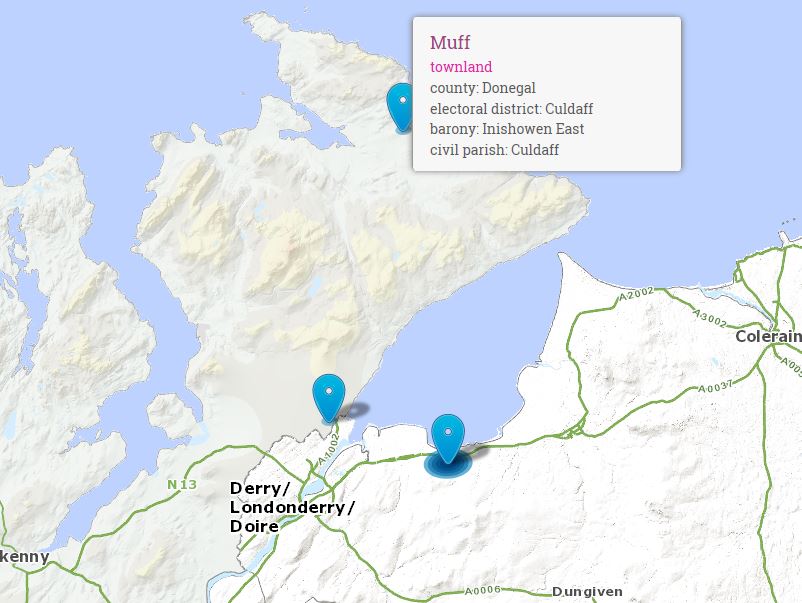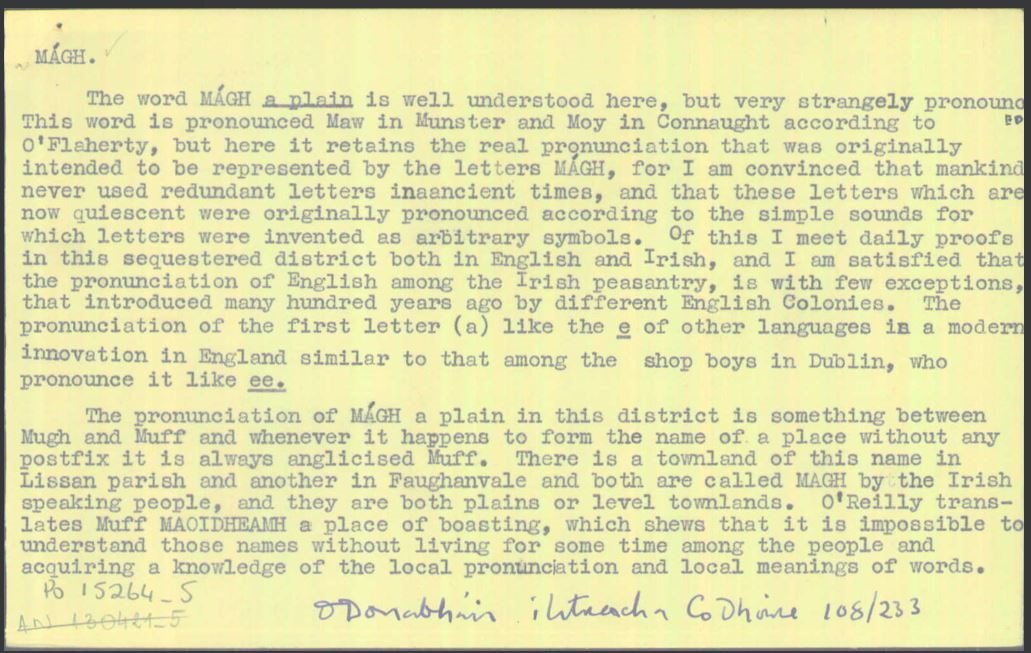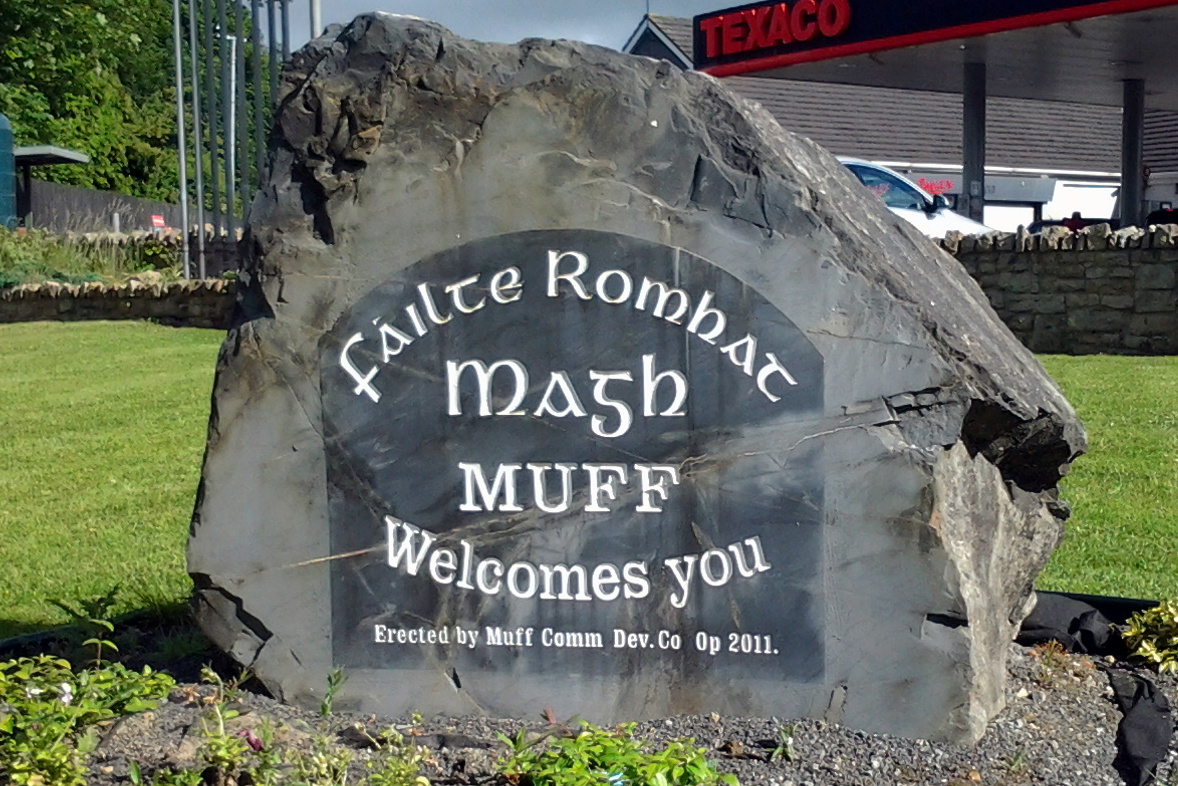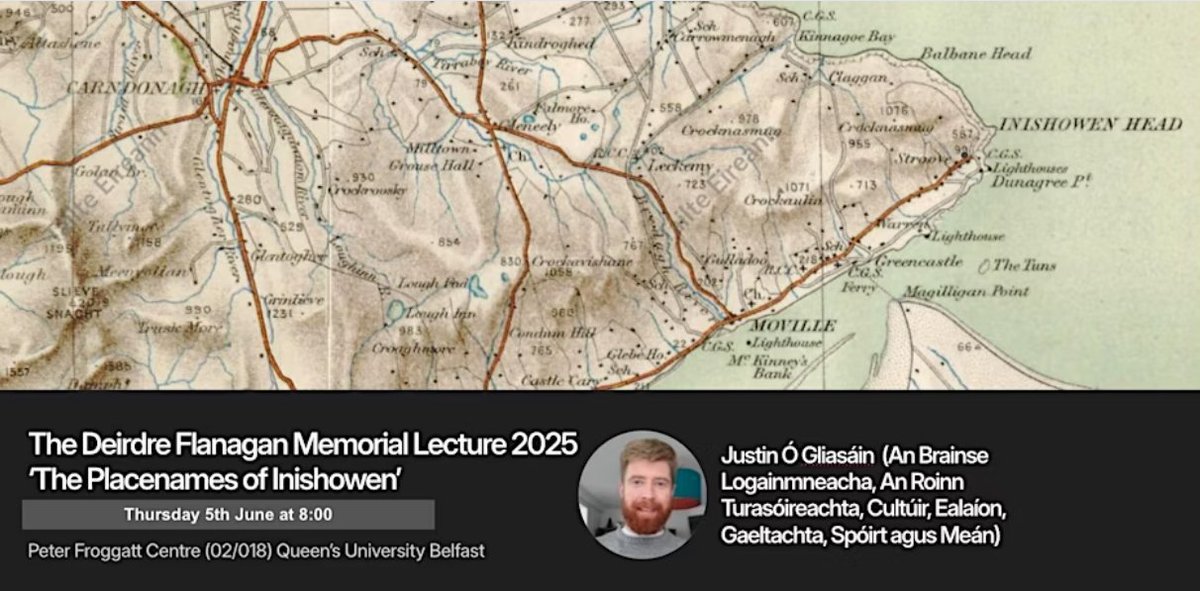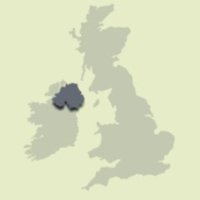
The Northern Ireland Place-Name Project
@placenamesni
@QUBelfast project exploring the linguistic origins of townland and other historical names. Funded by @communitiesNI. Tweets @proinsy [email protected]
ID: 3060524387
http://www.placenamesni.org/ 25-02-2015 02:05:53
10,10K Tweet
7,7K Followers
762 Following






@BernardJMolloy6 Dr Frances Kane Yes, of course, and both phonemes represent voiced/devoiced examples of the same form, in that muff- and mav- are essentially a minimal pair.


The pronunciation of Muff seems to reflect the original Irish but this may have been reinforced by the pronunciation in English of ‘gh’ as ‘f’ in words such as ‘cough’ and ‘rough’ The Irish News irishnews.com/arts/thebluffe…


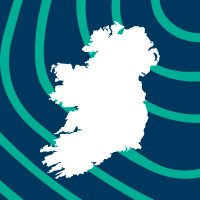



Traolachbt35 Department of Culture, Communications and Sport Dept Rural & Community Development & the Gaeltacht The Northern Ireland Place-Name Project Foghlaim TG4 Biodiversity Ireland wildflowerhour Donegal County Council Donegal County Library The toponymic element 'Mín' occurs frequently across Donegal: Mín an Albanaigh/Meenanalbany Mín an Aoire/Meenaneary Mín an Arbhair/Meenanarwa Mín an Bhaill Deirg/Meenawilderg Mín an Bhainne/Meenawannia Mín an Bhealaigh/Meenavally Mín an Chait/Meenachuit...
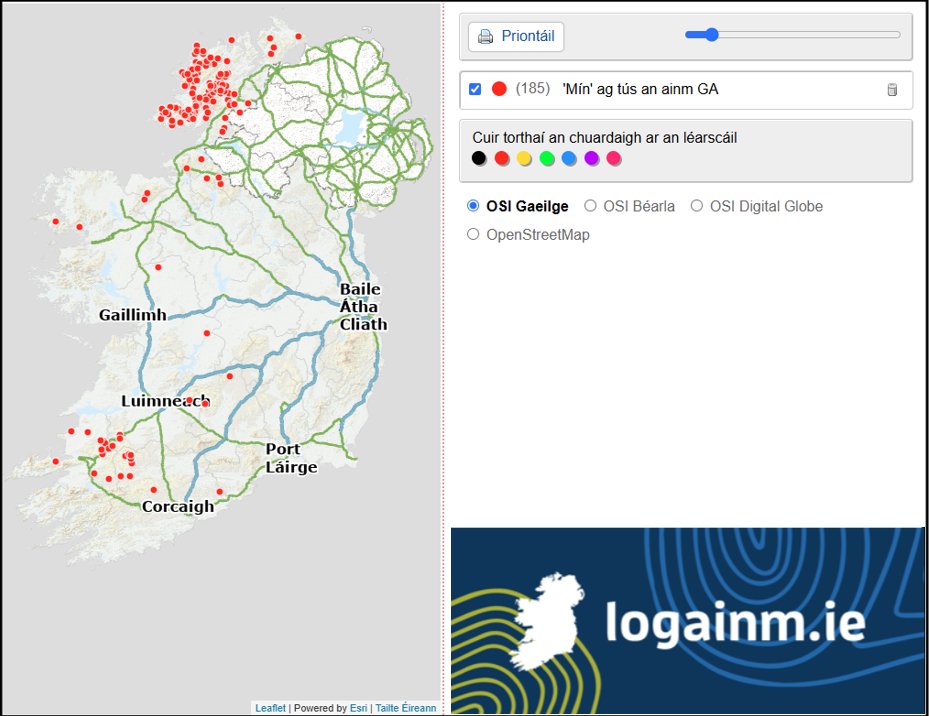

Re-sharing some Muff bits and pieces ahead of the The Northern Ireland Place-Name Project UPNS Spring Lecture this week with Justin Ó Gliasáin Logainm.ie on 'The Place-Names of Inishowen'. All welcome!
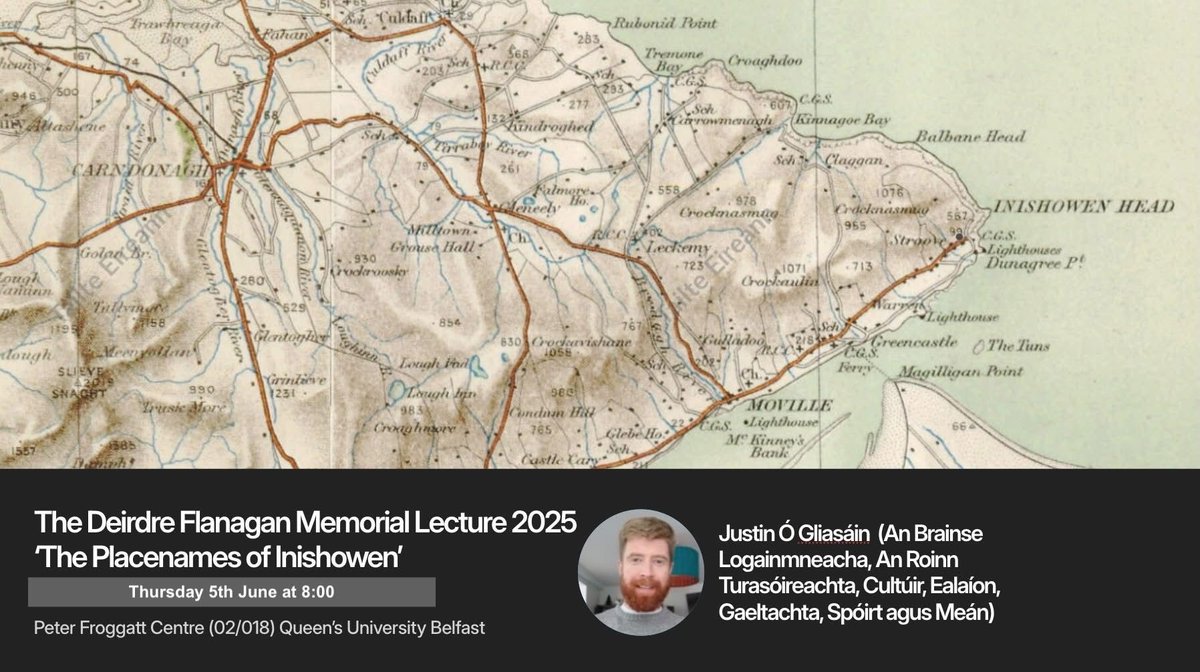

Exploring the Belfast Hills from behind with Dr Frances Kane! #TikTok vm.tiktok.com/ZNdStHwRf/
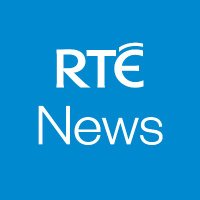


Eglinton…before it was Eglinton with Dr Frances Kane #TikTok vm.tiktok.com/ZNdA4DRqG/
